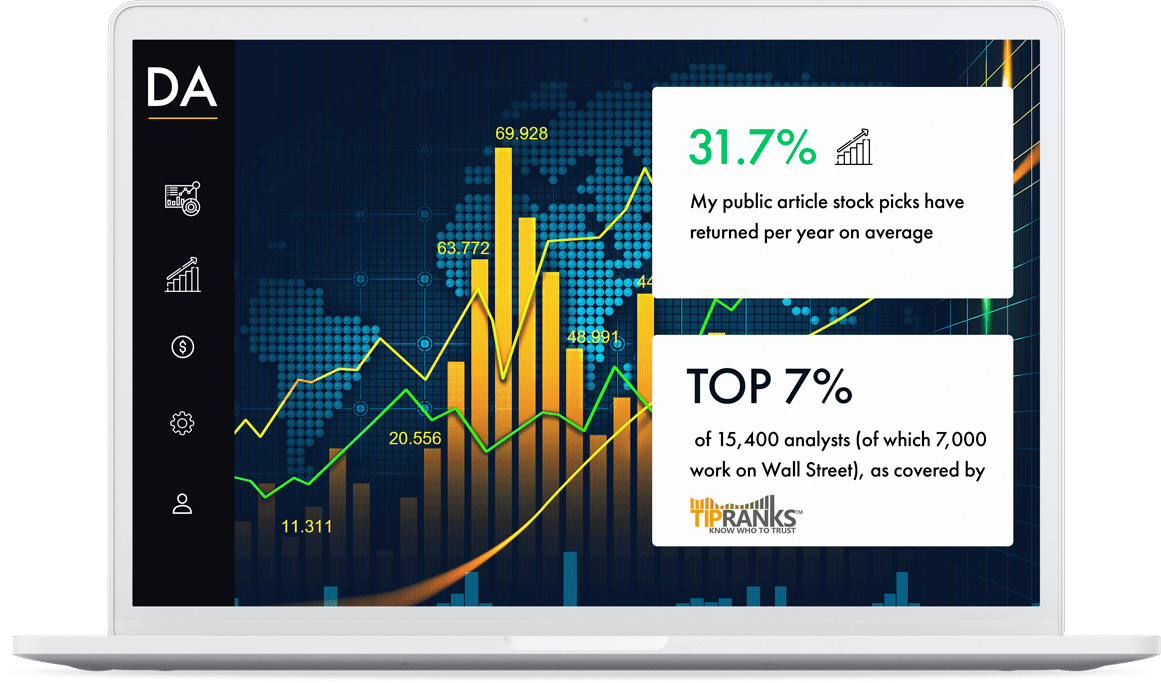Interest rates have a profound impact on the economy and financial markets. They affect both businesses on a operational level and the valuations of those businesses on public stock markets. Arguably, how interest rates affect stocks through valuation changes, has the biggest impact as it directly influences capital inflows and therefore stock price changes. In this article, I will discuss both sides of the coin and give examples on how interest rates affect stocks.
Interest Rate Affects on Businesses
The vast majority of businesses have taken on loans. The interest rate on that loan represents how much does it annually cost for the company to service that debt. When interest rates go up - loans cost more in interest payments. On the other side, when interest rates go down - companies can re-finance existing debts at lower rates and new loans are also cheaper to take on.
At lower interest rates, it's cheaper for companies to take on loans to invest in business growth, which can increase future profits.
Additionally, lower interest rates also mean lower debt costs for consumers. As consumers have more cash in hand, they can spend more money, which leads to increased revenues for companies.
Interest Rate Affects on Stock Valuations
I'm sure most of you have heard of the 60/40 portfolio.
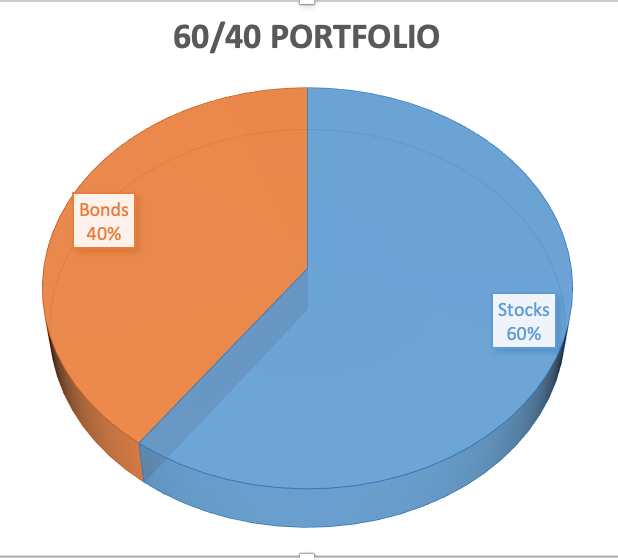
It's one of the most classical asset allocations.
The idea behind it, is that stocks perform well in bull markets and bonds hold up well in bear markets.
Simplest way to achieve that allocation would be to hold the S&P500 index fund/ETF for the "stocks" part and 10-yr U.S Treasury Bonds for the "bonds" section.
It typically requires regular re-balancing.
As they are the 2 largest asset classes - they are both competing for investors capital.
Equity Risk Premium
Stocks are considered to be high-risk investments, but have higher upside potential.
Sovereign (government) bonds from developed nations such as the U.S are the a virtually risk-free investment, since they are backed be the issuing nation.
Investors taking on the higher risk from investing in stocks, want to be compensated for it with higher potential returns.
The return above the risk-free rate is called Equity Risk Premium.
For example, if the (risk-free) U.S 10-yr Treasury bond is yielding 3%, how much would You require from a "riskier" stock investment to compensate for that elevated risk?
If, for example, you want at least an extra 4% in return for taking on stock investing risk, that means your equity risk premium is 4%.
It means you want to make a premium of at least 4% above the risk-free bond investment to put your money in stocks instead.
Interest Rate Effects on Equity Risk Premium
When 10-yr Treasury Bond is 3% and you require a 4% equity risk premium for stocks, that means you require a 7% return from stocks.
Expected Return: Risk Free Rate (3%) + Equity Risk Premium(4%) = 7%.
In other words, your discount rate is 7%.
Discount rate is one of the inputs used in the Discounted Cash Flow Model, to come up with a fair value for stocks.
The higher the discount rate, the higher returns investors require from their stock investments.
Lower discount rate - lower required returns from an investment.
Interest Rate Affects on Stocks "Fair Value"
As we saw in the previous chapter, changes in interest rates directly change the discount rate.
In turn, changes in the discount rate in the DCF valuation model greatly affect stocks "Fair Value" prices.
Below we have an example using our built-in 2-Stage Discounted Cash Flow Model calculator from the Premium Members Area.
I ran a fictional company with identical fundamentals through 2 different Fair Value calculations.
First using a 7% discount rate.
Then using a 6% discount rate.
All other inputs remained the same for both calculations.
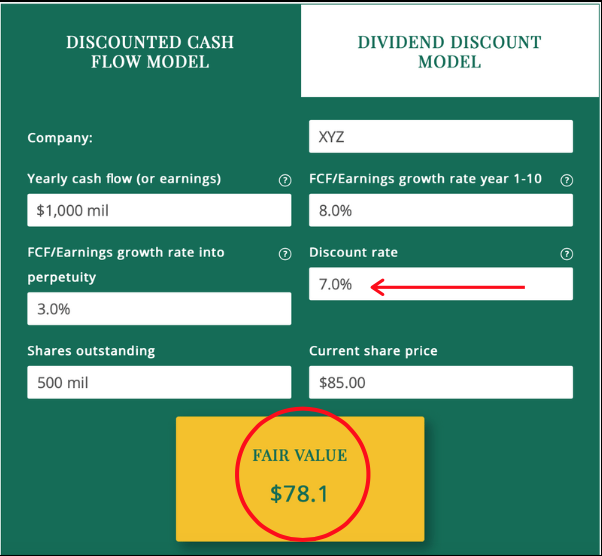
The Fair Value target based on a 7% discount rate is $78.1 per share
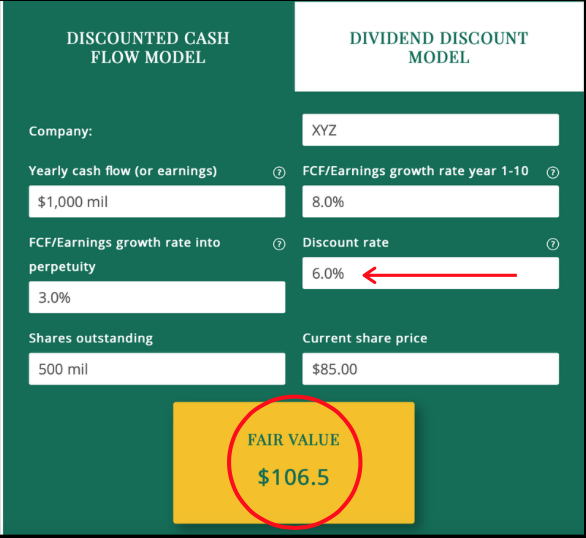
The Fair Value target based on a 6% discount rate is $106.5 per share
Just a 1% decrease in the discount rate increases the "Fair Value" of a stock by 36% all other things being equal.
As the discount rate is the risk free rate (interest rate) + equity risk premium, if interest rates are reduced by 1%, investors are willing to pay a lot more for stocks.
The lower the interest rate - the lower returns investors require for stocks.
Therefore stock investors are willing to pay a lot more for the same company if interest rates are reduced.
Below we have a chart showing how interest rates in the U.S have been declining for decades now.
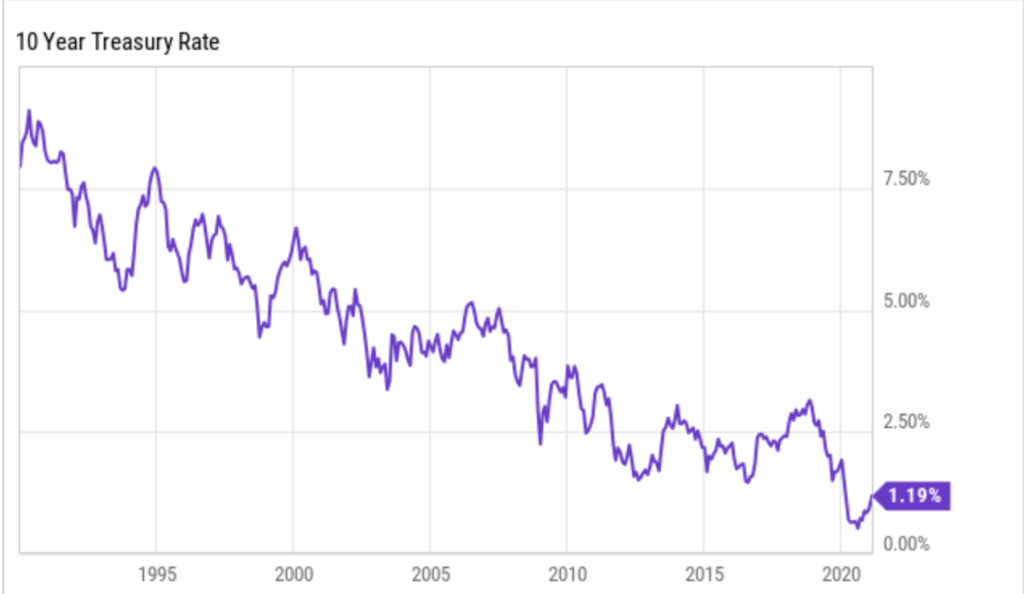
This has provided a strong tailwind for stocks, as they have become much more attractive investments in comparison to bonds.
Investors have been valuing stocks with lower and lower discount rates. Meaning they've been willing to pay more for equities as the risk-free alternative (bonds)
Summary
Lower interest rates reduce financing costs for businesses and can boost consumer spending, leading to increased revenues.
However, the biggest affect interest rates have on the stock market, is making stocks more attractive than bonds in comparison.
By lowering the discount rate, investors are willing to pay more for stocks in a lower interest rate environment. That pushes stock prices up as more capital flows into equities.
Disclaimer: This is NOT a recommendation to buy or sell any shares or to follow a particular investing strategy. You can lose your invested capital.I am not responsible for the accuracy of any of the data presented in the article. I am not a financial professional of any kind.None of the information here should be considered as a basis for financial planning. Any stock transactions or analysis published should NOT be considered to be investing recommendations. Before making any investing or financial decisions, you should contact an appropriate professional.This website should be viewed for entertainment purposes only.

